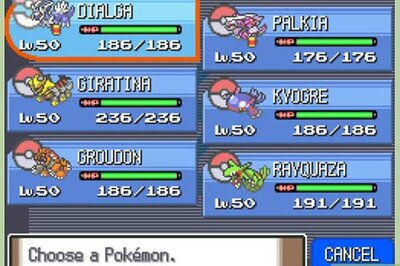
views
 Long, long ago, water was more dangerous than alcohol.
Long, long ago, water was more dangerous than alcohol.
You name a disease and all microorganisms that caused it were dutifully present in drinking water. One sip of the murky water and you’d be rushed to an abbey nearby to be administered with medicines steeped in alcohol.
Are you health-conscious? Drink beer. Yes, drink beer. It was pretty much the only way to stay out of murky water those days. Just like we buy packaged drinking water, they sought spirits to stay away from dirt and disease.
They called the drink aqua vitae aka elixir of life aka water of life.
Sadly, long before we were born, drinking water became potable. Alcohol was knocked off its throne and asked to wear that disgraceful statutory tag around its neck. The warnings shooed away customers and alcohol’s services to mankind were forgotten.
Times may have changed, priorities and tastes reset, but many abbeys in Europe cannot shake away the hangover of the Middle Ages when they tended the sick and the poor with the mysterious elixirs they concocted.
On the banks of Meuse River in Belgium, one such abbey sits with its walls reverberating the horrid memories of its struggle against misfortunes which struck it, wave-after-wave.
The poor monks of the Leffe Abbey were making an ale with secret ingredients even in the 12th century.
Disaster hit Leffe, for the first time in the 15th century. The dark plague struck the shores of Meuse and Leffe had to sacrifice the lives of the Abbot and seven monks.
It was just the beginning.
In 1460, a flood hit the abbey, drowning the then Abbot. The deluge left only the four walls around the abbey and a tower where the remaining monks sought refuge. The monks hardly had any time to repair the buildings when Charles the Bold and his forces hit them. The army looted and vandalised the abbey, leaving it nearly gutted in the fire.
When the going got tough, only the monks got going. Patiently, meditatively, they continued with their tradition of making beer through all the adversities.
By the 18th century, the abbey had been rebuilt but had to welcome a regiment of Polish Hussars, mercenaries who were notorious for their cruelty. They had scant regard for the abbey’s religious nature and plundered everything, including the brewery. What they did not guzzle down was broken and flushed out through the drains.
Even the Hussars, though, were far more kind when compared to the next group which stormed in – the French Republican Troops. Liberty, Equality and Fraternity. They brought none of these to the portals of the abbey and stormed into the religious centre. Churches were anathema to French revolutionaries and in 1796, the abbey was officially abolished and declared a state property.
Brewing of Leffe ale continued on a small note with the monks working day and night from dark corners of the village. The abbey, meanwhile, was being sold piece-by-piece and passed from generation to generation. It was shut down completely in the 19th century.
During the First and Second World War, the occupying forces melted down most of the brewing equipment from Leffe to make weapons.
Was that the end to the great brewing history of Leffe? Did fate get satiated when it saw the last nail being driven into the coffin?
In 1952, when Father Abbot Nys met Albert Lootvoet, a brewer at Overijse, they had only one thing in their mind – The Leffe ale. They leafed through mouldered, dog-eared papers to study the queer distilling processes and to revive the miraculous potion.
The new beer – Leffe, the flagship of Abbey – was born. No, reborn. It only had to hark back to its long tradition and the travails of monks, who stood stoically against the rage of the elements, diseases and insensitive men, to become an instant hit around the world.
Smooth and fruity with a spicy aftertaste, Leffe Blonde is now available in India as well.
The next time you go to get a pint, don’t forget the abbey. Remember its long run through history with all the dark forces behind the poor monks. Hold a glass of pale Leffe, with a rich foamy head, in your hands.
Imagine the monks working, meditatively, in dingy holes besieged by flood, fire and war to make that amber you hold in your hand.
Now take a slow sip. Eyes closed.
(Manu Remakant is a freelance writer who also runs a video blog - A Cup of Kavitha - introducing world poetry to Malayalees. Views expressed here are personal)



















Comments
0 comment